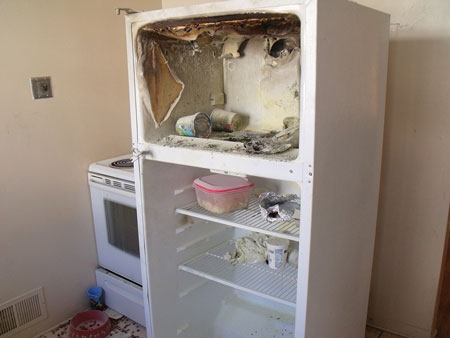
On November 6, 2012, Colorado voters approved Amendment 64, a measure intended to regulate marijuana like alcohol in the state; it became law on January 1, 2013. As a result, the Aurora (CO) Fire Department (AFD) Fire and Explosives Investigation Bureau (FEIB) was trained on the manufacture, the use, and the hazards of marijuana concentrate, commonly known as butane hash oil (BHO). The FEIB is staffed by three full-time fire and explosives investigators and two on-call investigators. As the bureau’s captain, I supervise two lieutenant investigators as well as the on-call investigators. All investigators have served at least three years as firefighter/emergency medical technicians or paramedics, operating as online firefighters certified and commissioned police officers, and are certified as bomb-paratechnicians, working and training as part of the bomb squad. The fire department’s first incident involving BHO manufacturing occurred in December 2013. In the next six months, the department would respond to an average of two BHO incidents a month.
Fire/Explosion Responses
On December 16, 2013, AFD crews responded to an explosion in a multifamily dwelling. The initial crew reported that an explosion had occurred inside a single unit and there was only a small smoldering fire, which personnel extinguished. The crew noticed that a refrigerator/freezer unit had sustained the most damage from the explosion (photo 1). The battalion chief thought it was odd for a refrigerator to explode. The battalion chief requested that a fire and explosives investigator from the department’s FEIB respond to the scene.
 |
| (1) Photos by author. |
Fire and Explosives Investigator Jeff Johnson responded to the scene to conduct a fire origin and cause investigation into the explosion and smoldering fire. Johnson determined that an exothermic overpressure event had occurred inside the residence. The area of origin for the initial event was determined to be inside the freezer portion of the refrigerator/freezer. In photo 2, note the pattern emanating from the fan unit of the freezer. The force of the explosion blew the refrigerator and freezer doors off their hinges and sent food through the window across the kitchen. The investigator noted a melted plastic bowl inside the freezer that contained ground-up marijuana plant product. On the kitchen counter, he documented marijuana plants and paraphernalia and various glassware with coffee filters secured over the top of the glass (photos 3, 4). When Johnson went to interview the residents, he found that they had left the scene. The fire explosion would remain an open case for further investigation as the FEIB could not determine the first fuel ignited.

On January 1, 2014, I heard the dispatch for an explosion and a fire in another multifamily dwelling. Dispatch was relaying information to responding units, stating there was possibly one victim who had been burned. Johnson and I responded to the scene to conduct the investigation.

AFD units reported an explosion with a small smoldering fire in the upstairs bedroom and one juvenile victim with minor burns to the face and head. We arrived on scene and found him in the back of the ambulance ready for transport to The Children’s Hospital. We conducted a brief interview, in which the juvenile stated he was extracting hash oil in his bedroom when it exploded. This was the first time the FEIB had heard of hash oil.
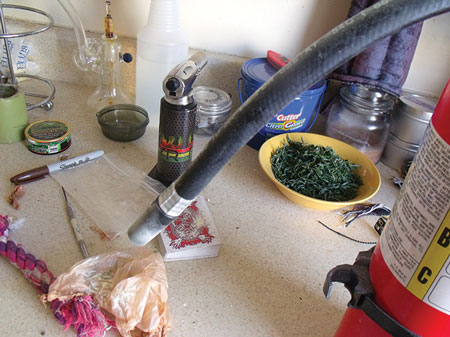
We waited for the juvenile’s parents to return to the residence, since they were not at home when the incident occurred. From the parents, we obtained consent to search the residence and seize any evidence or contraband and started our investigation. Upstairs, we found a small amount of marijuana scattered around the bedroom and the bathroom and a bicycle tire pump that had been altered and resembled a pipe bomb or improvised explosive device (IED). It had a coffee filter on one end and was next to a butane canister (photo 5). It smelled of marijuana and was sealed on the other end with melted plastic. The sealed end had a very small hole matching the diameter of the butane canister nipple found next to the pump. We located 15 more 5.8-ounce butane canisters scattered around the upstairs bedroom (photo 6).
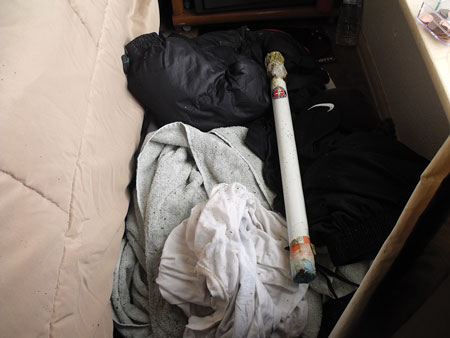
We documented a microwave oven in the upstairs bedroom. Burn patterns inside the microwave indicated that a fire had occurred inside of it; the fire then was spread around to different articles inside the bedroom. In addition to glassware, coffee filters, marijuana, and paraphernalia, we also found a small glass bowl filled with a golden oily substance with a very strong smell of marijuana (photo 7). We seized all the items and issued the juvenile a municipal summons for reckless kindling. The juvenile was issued a misdemeanor summons, since the district attorney’s office had yet to establish an opinion for the filing of felony charges for manufacturing marijuana concentrate.
Hash Oil Research
We returned to our office to finish our investigation, searching on the Web for “hash oil.” We found more than two million results and, more importantly, we found images that matched the golden oily substance we had seized from the juvenile’s bedroom. The Aurora Police Department Crime Lab’s analysis of the substance revealed it contained a high percentage of tetrahydrocannabinol (THC). This was the first time we had encountered hash oil, and a 14-year-old had been making it in his bedroom.
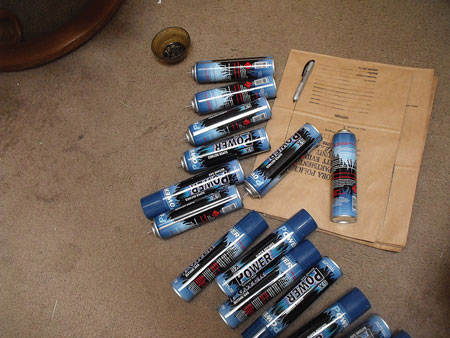
Before the two previous events, the FEIB had investigated numerous marijuana grow house fires. Most of these fires had originated from overloaded electrical services or from the numerous lights associated with growing marijuana. Prior to December 2013, Aurora had not had any reported explosions associated with marijuana or marijuana growing operations.
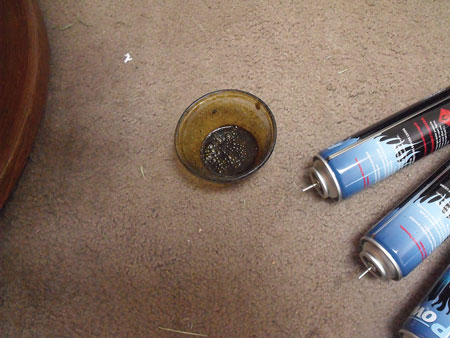
On February 8, 2014, the AFD responded to another explosion resulting in a fire in a multifamily dwelling (photo 8). Personnel reported that a ground-floor apartment had suffered an explosion and found several smoldering fires inside. Two male victims were out in the front of the residence with partial thickness burns. As crews were conducting a primary search, they found marijuana and paraphernalia, including a metal container that resembled a pressure-cooker bomb (photo 9). AFD personnel evacuated the residence and waited for our arrival. On arrival, Johnson and I found the victims were the residents of the explosion address and had both been transported to the hospital. Responders described the device they had found, which from our research we recognized as a vacuum purge device used in manufacturing BHO.
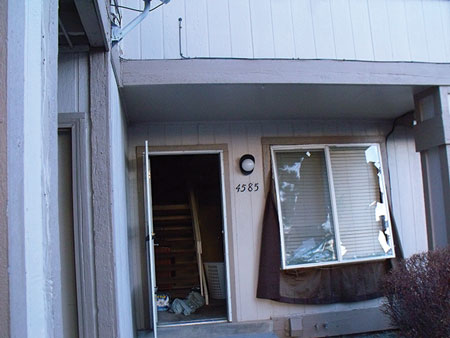
A vacuum purge device is a large pot with a valve usually located on the front and with lids that seal either by twist grooves or clamps (photo 10). To the unfamiliar responder, these vacuum containers may look similar to an IED and should be treated as such until they are confirmed to be otherwise. We conducted an initial fire origin-and-cause investigation under the exigency clause (as the fire was still smoldering and crews had not conducted overhaul). We both noticed, in plain view, marijuana paraphernalia and items consistent with BHO manufacturing. We stopped our investigation and obtained a search warrant the next day. We seized numerous items used in manufacturing BHO including 36 5.8-ounce butane canisters. We also seized one 16-inch glass extractor tube that is available in retail shops and a 14-inch metal extractor that also resembled a pipe bomb (photo 11).
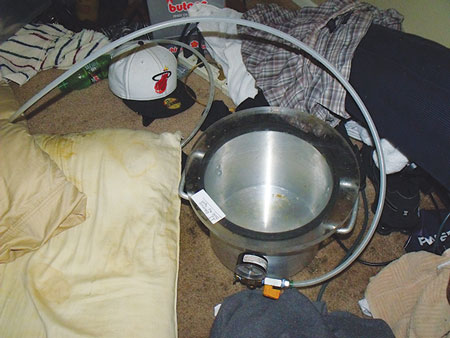
With the increased number of BHO explosions and fires we were experiencing, we opened a dialogue with our district attorney’s office. Since January 1, 2014, Colorado has experienced 32 BHO explosions resulting in 30 injuries.1 The direction and opinion from the 18th Judicial District was that the private manufacture of BHO was illegal. We were then able to present the first felony charges for the illegal manufacturing of marijuana concentrate according to the Colorado Revised Statutes. We also discovered that people who were illegally manufacturing BHO most often had illegal marijuana growing inside the residence. This led to the FEIB working closely with the Aurora Police Department’s marijuana enforcement detectives. We also “worked with” two manufacturers who had been involved in explosions while illegally manufacturing BHO in their residence. These two individuals provided us with great insight into the extracting, the purging, the dewaxing, and the consumption of BHO. We referred one subject to the Aurora Police Department Narcotics Bureau; he was used as a confidential informant on the illegal distribution of marijuana and BHO. For their cooperation, these two individuals received lesser charges.

We became experts through research, investigations, and eventually testifying at trials for the illegal manufacturing of marijuana concentrate. The lessons learned applied to fire and explosive investigators and to responding fire and emergency medical service (EMS) crews. We learned there are numerous ways to extract THC from marijuana plants and the most common forms all involve ignitable or flammable solvents. Also, the purging of the solvents out of the oleaginous substance involves either heating or cooling the extracted product. The dewaxing of winterized hash oil involves the use of ignitable/flammable liquids or solvents to include grain alcohol (photo 12). Finally, we learned why so many people have been illegally manufacturing BHO.
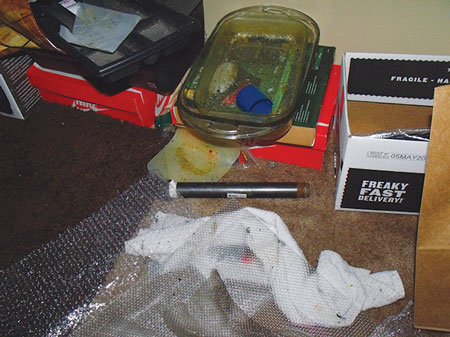
The marijuana grown in licensed retail grow shops in Colorado and sold in retail shops has an average THC concentration of approximately 23 to 25 percent. BHO, legally or illegally manufactured, has a THC concentration of approximately 80 to 90 percent. This increase in the THC levels means a quicker and more intense high for the consumer. BHO can be smoked, vaped in E-cigarettes or vapor pens, or put into edibles for ingestion.
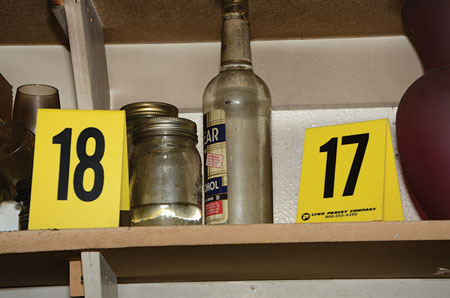
Manufacturing BHO is not new, but it has become more popular based on the belief that it is legal to do so privately. Colorado Amendment 64 was written in very vague terms and specifications, so many believed it was legal to manufacture marijuana concentrate in their private residences. The first trial for the charge of the illegal manufacturing of marijuana concentrate began in September 2014 in the 19th Judicial District, Weld County. I was the prosecution’s expert witness on the manufacture of BHO and the expert witness on the origin-and-cause investigation of the explosion and subsequent fire at the residence. The jury found the defendant guilty; that person received three years of probation, 60 days of electronic home monitoring, and 48 hours of useful community service.
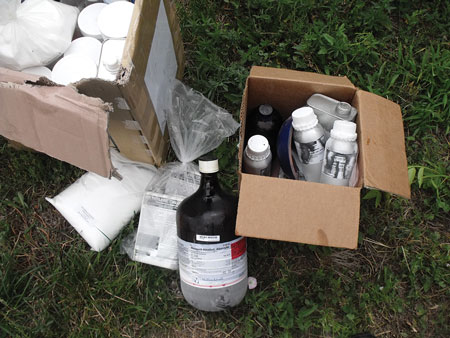
Manufacturing BHO
The most common way to obtain marijuana concentrate is to manufacture BHO, which is a four-step process.
First, the manufacturers need a moderate amount of marijuana plant material, which can include buds, stems, and leaves. The material is ground up in a blender or coffee grinder; the resulting material is called a “shake.” The shake is then placed in an extractor tube, such as the commercially available glass extractor tube or one improvised from a bicycle air pump. One end of the tube has a receiver that is the same size as a butane canister nipple. The other end is covered by a coffee filter or cheese cloth.
The second step is “blasting.” Butane is then passed through the tube, extracting the THC in an oleaginous solution. As the butane is released, the solution and the extractor become very cold. The cold solution is then captured in a bowl or dish, which usually is heatproof glass because of the temperature variations. The solution that comes out has a gold to brown color. This solution is off-gassing captured butane and other marijuana impurities. The solution then dries or hardens. It contains pockets of trapped butane that need to be purged.

The third step is to purge the product of trapped butane and other impurities. Of the variety of purging methods, the most common is to soak the dish with the solution in a warm water bath. This works best with a double boiler setup. As the solution is kept warm, the butane is off-gassing. Because this usually involves a heat source, it is the point at which the majority of our explosions occurred. Once purged, butane becomes a fugitive gas with a specific gravity of 1.8 (almost two times heavier than air) and starts to sink and, at that point, comes in contact with a heating element or other ignition source, such as a pilot light.
To get a more refined hash oil known as “shatter,” the manufacturer takes the purge a step further to a process called “winterizing” or “dewaxing.” Winterizing removes the marijuana plant wax from the hash oil. The manufacturer pours the purged BHO into a glass container such as a canning jar; pours acetone, toluene, 99-percent pure isopropyl alcohol, or grain alcohol into the jar with the solution; and places the jar in a freezer.
Most illegal manufacturers use common fan-equipped freezers, not deep freezers. Deep freezers have no electrical fans or wiring inside the freezer compartment and, thus, do not provide a competent ignition source for the volatile substances used in winterizing. The chemicals off-gas, and the fugitive vapors can come in contact with a competent ignition source when the freezer’s circulation fan eventually kicks on.
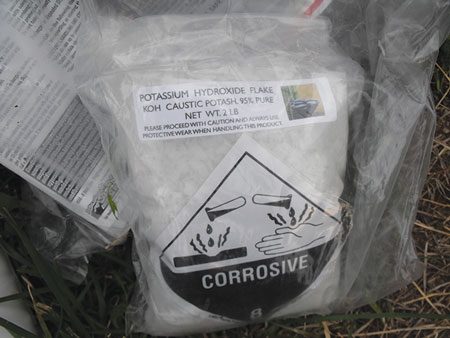
We have determined that the purging step is the point at which the refrigerator/freezer explosions have occurred.
First responders have to worry not only about fugitive butane gas igniting during the extracting and purging of BHO. Now, manufacturers use very volatile substances such as methylene chloride and toluene to make their marijuana concentrate more pure (photo 13). Since manufacturers need marijuana plant product to make the BHO, it is common for the labs to be associated with marijuana grows, large and small.
We have found that growers store large amounts of fertilizers for their plants. The most common fertilizers we have encountered are ammonium nitrate and urea (photos 14, 15). Often, we have come across these oxidizers on the same shelf as chemicals that can be used as fuel, like acetone, toluene, and methylene chloride. The combination of an oxidizer and a fuel are the basic components of explosives. Ammonium nitrate and fuel oil (ANFO) was the explosive used in the 1995 Oklahoma City Bombing of the Alfred P. Murrah Federal Building.

The combination of the unregulated storage of oxidizers and fuels in these marijuana concentrate labs should be considered just as dangerous as that in the meth lab. It should be standard practice for a hazardous materials team to respond to these new marijuana concentrate labs (photo 16).
Even after the initial explosion, we have encountered situations in which flammable vapors are detected through air monitoring. This has been attributed to damaged unused butane canisters and open containers of toluene, acetone, and 99-percent isopropyl alcohol. Consistently, the FEIB has encountered butane quantities ranging from several cases to pallets during investigations (photo 17). Responders should be aware of the dangers present even after an initial explosion or fire.
BHO Fire/Explosion Response: Accepted Practices
The AFD has established the following accepted practices when responding to a possible BHO explosion or fire.
- Ensure the electricity is secured to eliminate electrical ignition sources.
- Turn the natural gas off at the meter to eliminate pilot lights as an ignition source.
- Extinguish any smoldering fires.
- Treat victims, and transport them to appropriate facilities.
- Allow for ventilation, and monitor the atmosphere for flammable vapors.
- Avoid disturbing any chemicals, vials, or other glassware.
- Request a fire and explosives investigator or other authority having jurisdiction.
Marijuana Concentrate Consumption Dangers
The dangers to first responders are not just in the illegal manufacturing of marijuana concentrate but also in the use of such potent THC products.
On March 2, 2014, Wyoming College student Levi Thamba Pongi, 19, jumped to his death at a Denver hotel. Pongi came to Denver during spring break with three other friends. One friend was more than 21 years old and purchased a cookie infused with marijuana concentrate. After ingesting the cookie, Pongi then began to act irrationally, exited his fourth-story room, and jumped over the railing into the hotel lobby. The Denver County coroner listed marijuana intoxication as a “significant contributing factor” in the death.2
In a second incident, on April 14, 2014, Richard Kirk allegedly shot and killed his wife Kristina Kirk in their Denver home. She was on the phone with 911 when Kirk allegedly shot her. A search warrant affidavit was released by the Denver Police Department. The affidavit states, “Kristina Kirk told the dispatchers her husband had ingested marijuana candy and was hallucinating.”(2)
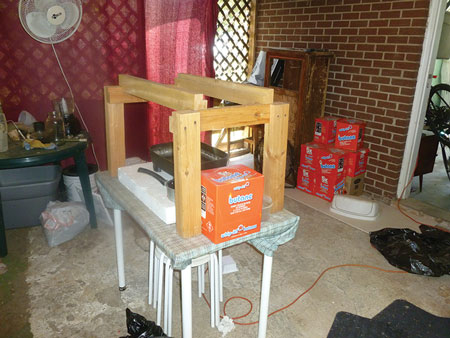
In another incident, reporter Maureen Dowd came to Denver to research the new marijuana phenomenon. After ingesting a pot-infused edible, she laid curled up in a hallucinatory state for the next eight hours. Dowd writes, “As my paranoia deepened, I became convinced that I had died and no one was telling me.”3
These are the people who will be calling police, fire, and EMS to rescue them from a “trip” or “high” they did not expect. Many times, these victims may be violent or not in touch with the reality that surrounds them. A 2004 article in the British Journal of Psychiatry reviewed four large studies, all of which showed a significant and consistent association between the consumption of marijuana and the later development of schizophrenia.4 With the stronger concentration of THC found in marijuana concentrate, mental health disorders have become an acute problem that first responders will confront. Situational awareness and safety must be paramount when responding to THC-related “overdose” calls.
This is not your grandparent’s marijuana or your common marijuana grow house anymore. We continue to see these incidents in Aurora, statewide, and nationwide. With more states legalizing marijuana and marijuana concentrate, first responders should expect to encounter these hazards in their jurisdictions.
References
1. “The Legalization of Marijuana in Colorado: The Impact.” (2014). Rocky Mountain High Intensity Drug Trafficking Administration. http://www.rmhidta.org/html/August%202014%20Legalization%20of%20MJ%20in%20Colorado%20the%20Impact.pdf.
2. “Two Denver Deaths Tied To Recreational Marijuana Use.” (2014). Associated Press. http://www.cbsnews.com/news/two-denver-deaths-tied-to-recreational-marijuana-use/.
3. Dowd, M. (2014, June 3). “Don’t Harsh Our Mellow, Dude.” The New York Times, The Opinion Page. http://www.nytimes.com/2014/06/04/opinion/dowd-dont-harsh-our-mellow-dude.html?_r=0.
4. Holmes, Ronald, M.D. (June 2014). “Marijuana and Children.” Paper presented at The Medical Center of Aurora, Morbidity and Mortality Case Review, Aurora, Colorado, 7.
SIEGFRIED KLEIN, a 21-year veteran of the fire service, is a captain with the Aurora (CO) Fire Department and its Fire and Explosives Investigation Bureau chief investigator. He is a Colorado Peace Officer Standards and Training Board-certified and sworn police officer and has served as an expert witness in fire and explosives investigations in numerous district courts. Klein is certified by the International Association of Arson Investigators as a fire investigator and as an instructor and is a National Association of Fire Investigators-certified fire and explosive investigator.
Siegfried Klein will present “The Illicit Manufacture of Butane Hash Oil: Dangers to First Responders” on Thursday, April 21, 3:30 p.m.-5:15 p.m., at FDIC International 2016 in Indianapolis.
Butane Honey Oil Risk Assessment for First Responders
Marijuana Oil Production Concerns Colorado Fire Officials
Denver’s Legalized Marijuana Industry and the Fire Code
Fire Engineering Archives

